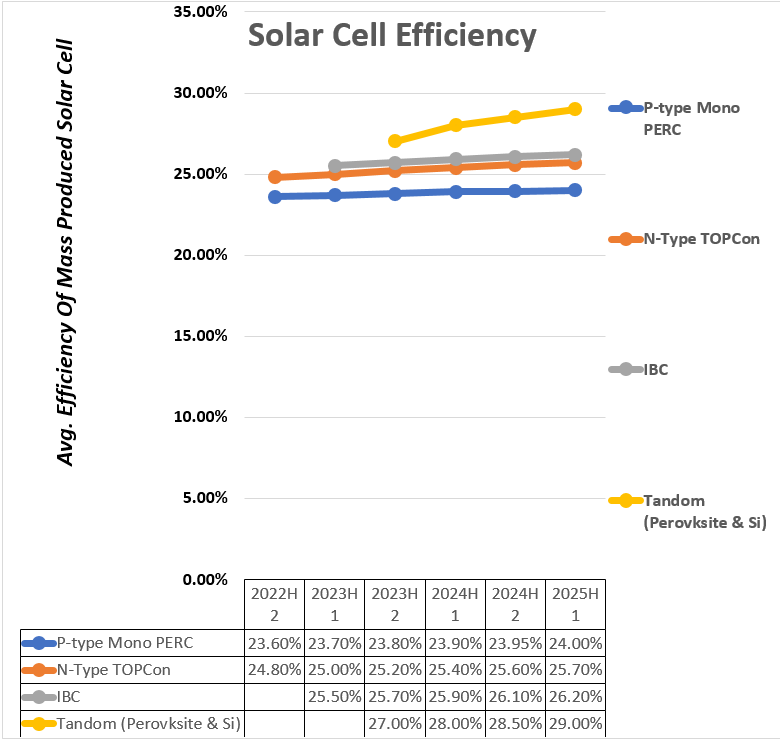Tandem Solar Cell: Solar Energy Industry’s Next Step Photovoltaics
- Vikas Kumar
- November 15, 2023
- ENERGY & POWER, NEWS
- Solar Energy 3.0, Solar Energy 3.0 Market, Solar Energy 3.0 Market analysis, Solar Energy 3.0 Market forecast, Solar Energy 3.0 Market growth, Solar Energy 3.0 Market share, Solar Energy 3.0 Market trends
- 0 Comments
Thin-film solar panels have advanced with the development of tandem solar cells. These cells comprise multiple layers of different materials, which can boost their efficiency and lower the cost of solar energy. Scientists have been working on enhancing the performance of tandem solar cells, and recent research indicates that these cells can achieve efficiency levels as high as 30%.
Market Sparks Ignited by Success Stories Companies A new advancement in solar panel technology has been made by Panasonic Energy Corporation with the development of a bifacial solar panel that can generate electricity from both the front and back sides. This new model boasts an impressive 22.5% efficiency level, which surpasses the company’s previous versions.
Access Sample PDF- https://univdatos.com/get-a-free-sample-form-php/?product_id=46986
In addition, SolarPrint has created a new method for producing solar panels using inkjet printing technology on flexible substrates. This innovation enables the creation of flexible and transparent solar panels.
Nanosolar has also made strides in the production of thin-film solar panels with a new roll-to-roll manufacturing process. This technology allows for the creation of solar panels at a lower cost and with higher efficiency levels than traditional thin-film solar panels.
Conclusion
Despite the restraints in the growth of Solar Energy 3.0 Market, the recent advancements in thin-film solar cells have the potential to significantly reduce the cost of solar power and increase its accessibility to a wider range of applications. Researchers have been developing new manufacturing techniques to improve the efficiency and cost-effectiveness of thin-film solar cells. Further, Tandem solar cells are made up of multiple layers of different materials, which can increase their efficiency and reduce the cost of solar power. Researchers have been developing new tandem solar cells using different materials, such as perovskite and CIGS. According to the UnivDatos Market Insights analysis, the surge in the application of portable devices and building integrated solar photovoltaics is driven by the global scenario of solar energy 3.0. As per their “thin-film solar cell Market” report, the global market was valued at USD 2690 million in 2022, growing at a CAGR of 9.8% during the forecast period from 2023 – 2030 to reach USD billion by 2030.


